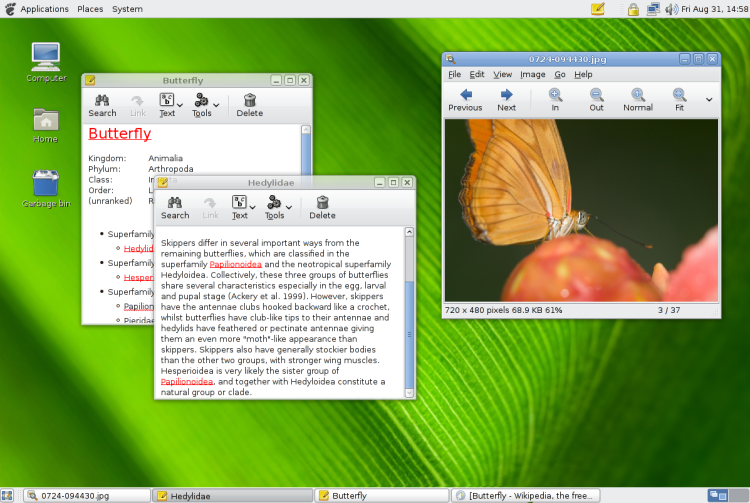|
Composite (graphics)
The Composite Extension of the X Window System renders the graphical output of clients "...to an off-screen buffer. Applications can then take the contents of that buffer and do whatever they like. The off-screen buffer can be automatically merged into the parent window or merged by external programs, called compositing managers." This enabled the creation of compositing managers for X, capable of effects like transparency, 3D rotation, and jiggly windows. The composite extension was added to X.org in version X11R6.8 in September 2004. References {{XWinSys X Window extensions ... [...More Info...] [...Related Items...] OR: [Wikipedia] [Google] [Baidu] |
X Window System
The X Window System (X11, or simply X) is a windowing system for bitmap displays, common on Unix-like operating systems. X provides the basic framework for a GUI environment: drawing and moving windows on the display device and interacting with a mouse and keyboard. X does not mandate the user interfacethis is handled by individual programs. As such, the visual styling of X-based environments varies greatly; different programs may present radically different interfaces. X originated as part of Project Athena at Massachusetts Institute of Technology (MIT) in 1984. The X protocol has been at version 11 (hence "X11") since September 1987. The X.Org Foundation leads the X project, with the current reference implementation, X.Org Server, available as free and open-source software under the MIT License and similar permissive licenses. Purpose and abilities X is an architecture-independent system for remote graphical user interfaces and input device capabilities. Each person using a ... [...More Info...] [...Related Items...] OR: [Wikipedia] [Google] [Baidu] |
Off-screen Buffer
A framebuffer (frame buffer, or sometimes framestore) is a portion of random-access memory (RAM) containing a bitmap that drives a video display. It is a memory buffer containing data representing all the pixels in a complete video frame. Modern video cards contain framebuffer circuitry in their cores. This circuitry converts an in-memory bitmap into a video signal that can be displayed on a computer monitor. In computing, a screen buffer is a part of computer memory used by a computer application for the representation of the content to be shown on the computer display. The screen buffer may also be called the video buffer, the regeneration buffer, or regen buffer for short. Screen buffers should be distinguished from video memory. To this end, the term off-screen buffer is also used. The information in the buffer typically consists of color values for every pixel to be shown on the display. Color values are commonly stored in 1-bit binary (monochrome), 4-bit palettized, 8-bit ... [...More Info...] [...Related Items...] OR: [Wikipedia] [Google] [Baidu] |
Compositing Manager
A compositing window manager, or compositor, is a window manager that provides applications with an off-screen buffer for each window. The window manager composites the window buffers into an image representing the screen and writes the result into the display memory. Compositing window managers may perform additional processing on buffered windows, applying 2D and 3D animated effects such as blending, fading, scaling, rotation, duplication, bending and contortion, shuffling, blurring, redirecting applications, and translating windows into one of a number of displays and virtual desktops. Computer graphics technology allows for visual effects to be rendered in real time such as drop shadows, live previews, and complex animation. Since the screen is double buffered, it does not flicker during updates. The most commonly used compositing window managers include: * for Linux, BSD, Hurd and OpenSolaris: Compiz, KWin, Xfwm, Enlightenment, Mutter, xcompmgr and picom; ... [...More Info...] [...Related Items...] OR: [Wikipedia] [Google] [Baidu] |

